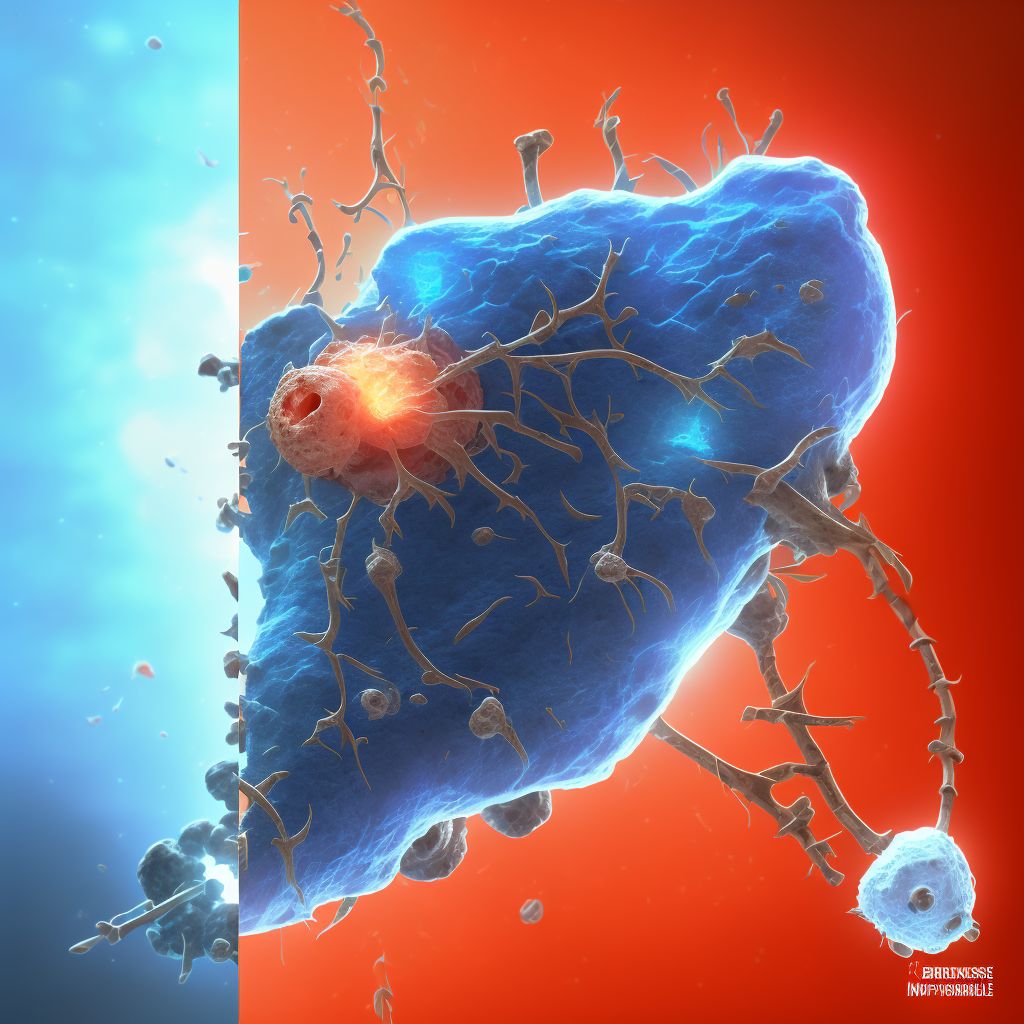
Nondisplaced bicondylar fracture of left tibia, initial encounter for open fracture type IIIA, IIIB, or IIIC Save
ICD-10 code: S82.145C
Disease category: S82.145: Nondisplaced bicondylar fracture of left tibia
Nondisplaced Bicondylar Fracture of Left Tibia: Understanding Initial Encounter for Open Fracture Type IIIA, IIIB, or IIIC
A nondisplaced bicondylar fracture of the left tibia is a complex injury that requires prompt medical attention. This type of fracture occurs when the tibia, or shinbone, breaks in two places, involving both condyles, which are the rounded ends of the bone that connect to the knee joint. When the fracture is open and classified as type IIIA, IIIB, or IIIC, it indicates that the broken bone has pierced through the skin, posing a higher risk of complications and requiring urgent treatment.
During the initial encounter for an open fracture type IIIA, IIIB, or IIIC, several important steps are taken to assess the injury and ensure proper medical intervention. These steps include:
- Assessment of the wound: The healthcare provider carefully evaluates the open wound to determine its size, depth, and contamination level. This assessment helps in classifying the fracture as IIIA, IIIB, or IIIC, which guides the treatment plan.
- Radiographic imaging: X-rays or other imaging techniques are used to visualize the fracture and assess the alignment of the broken bone fragments. This helps the healthcare team determine the severity and plan appropriate interventions.
- Wound cleaning and debridement: To prevent infection, the open wound is thoroughly cleaned and any debris or foreign objects are removed. Debridement, the removal of dead or damaged tissue, is performed to promote proper healing.
- Stabilization: If necessary, the healthcare provider may use external fixation devices, such as splints or casts, to immobilize the fractured bone and prevent further damage or displacement.
- Antibiotic administration: Due to the risk of infection associated with open fractures, antibiotics are often administered to prevent or control any potential bacterial contamination.
It is crucial to seek immediate medical attention for a nondisplaced bicondylar fracture of the left tibia, especially when it is an open fracture classified as type IIIA, IIIB, or IIIC. Timely assessment, imaging, wound care, stabilization, and administration of antibiotics are vital steps in the initial encounter to ensure proper management and reduce the risk of complications.
Remember, the information provided here is for educational purposes only and should not replace professional medical advice. If you suspect a fracture or any other medical condition, please consult a healthcare professional.
Treatment of Nondisplaced bicondylar fracture of left tibia, initial encounter for open fracture type IIIA, IIIB, or IIIC:
Treatment Options for Nondisplaced Bicondylar Fracture of Left Tibia
A nondisplaced bicondylar fracture of the left tibia is a severe injury that requires immediate medical attention and appropriate treatment. This type of fracture is classified as open fracture type IIIA, IIIB, or IIIC, indicating varying degrees of severity and complexity.
When it comes to treating a nond...
To see full information about treatment please Sign up or Log in